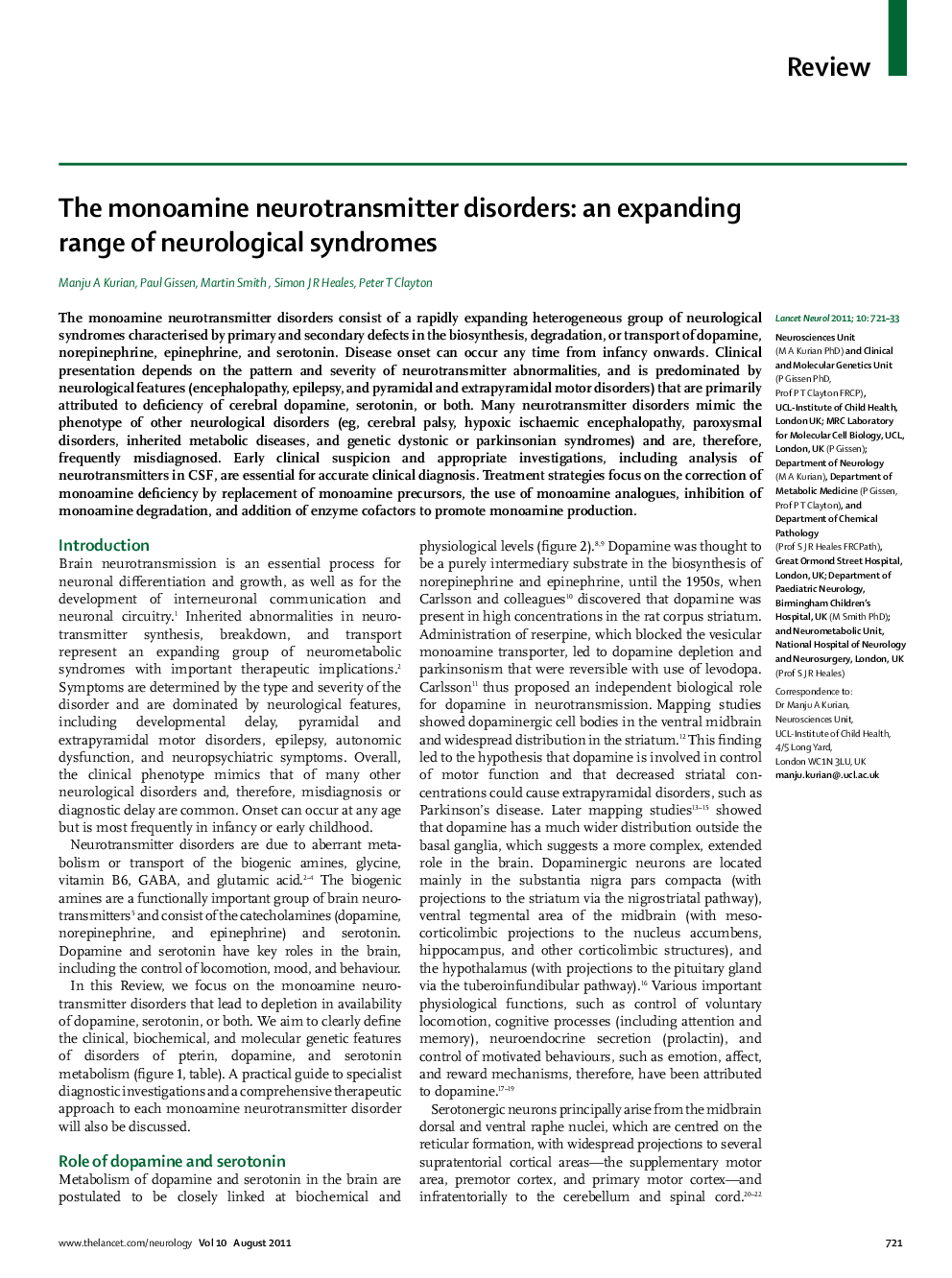| Article ID | Journal | Published Year | Pages | File Type |
|---|---|---|---|---|
| 3066819 | The Lancet Neurology | 2011 | 13 Pages |
SummaryThe monoamine neurotransmitter disorders consist of a rapidly expanding heterogeneous group of neurological syndromes characterised by primary and secondary defects in the biosynthesis degradation, or transport of dopamine, norepinephrine, epinephrine, and serotonin. Disease onset can occur any time from infancy onwards. Clinical presentation depends on the pattern and severity of neurotransmitter abnormalities, and is predominated by neurological features (encephalopathy, epilepsy, and pyramidal and extrapyramidal motor disorders) that are primarily attributed to deficiency of cerebral dopamine, serotonin, or both. Many neurotransmitter disorders mimic the phenotype of other neurological disorders (eg, cerebral palsy, hypoxic ischaemic encephalopathy, paroxysmal disorders, inherited metabolic diseases, and genetic dystonic or parkinsonian syndromes) and are, therefore, frequently misdiagnosed. Early clinical suspicion and appropriate investigations, including analysis of neurotransmitters in CSF, are essential for accurate clinical diagnosis. Treatment strategies focus on the correction of monoamine deficiency by replacement of monoamine precursors, the use of monoamine analogues, inhibition of monoamine degradation, and addition of enzyme cofactors to promote monoamine production.
